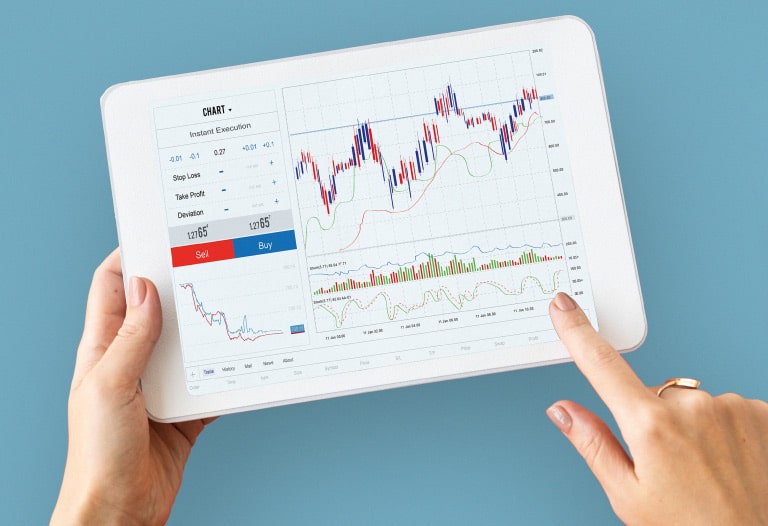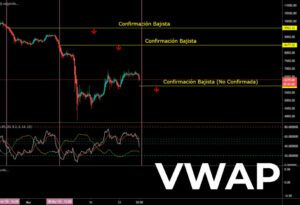
Table of Contents
ToggleYou may have heard of technical analysis (TA). This is the prediction of future market trends through analysis of past behavior. In both traditional and cryptocurrency markets, most traders rely on specialized indicators and analytical tools of past data in order to identify market patterns and attempt to predict future price movements.
Broadly speaking, an RSI indicator is a momentum oscillator that excels at measuring the magnitude of price movements and how fast they are. The RSI is a very useful tool, regardless of the type of trading being carried out. That is why it is one of the most used tools by traders and technical analysts. In a few words, this tool indicates the relative strength of upward movements compared to downward movements.
History of the RSI indicator
The history of the relative strength index (RSI) begins in the late 1970s, when it was developed as a tool for stockbrokers to analyze the performance of stocks over time.
In 1978, mechanical engineer J. Welles Wilder decided to focus his analytical training on technical trading. Wilder began his career in finance and real estate in the 1960s. Later, his partners bought him out of the business in 1972. Wilder decided that with the $100,000 profit he would start trading the stock market. This decision led him to search for reliable tools to identify profitable patterns.
By 1978, Wilder had made a compilation of his research and experience with mathematical formulas and indicators that traders could use to help them in the market. The Relative Strength Index was one such indicator.

How does the RSI indicator work?
The RSI is a tool that, by default, measures changes in the price of an asset over 14 time periods (14 days on a daily chart, 14 hours on an hourly chart, etc.). The formula used for this divides the average gain the asset price has made during this period by the average loss it has suffered, and then plots that strength on an adjusted scale between 0 and 100.
As we have already pointed out, the RSI is a monumentum indicator, a technical trading tool that measures the rate of price change. When the monumentum rises, it means that the market is actively buying stocks. When the monumentum falls, it shows that traders’ interest in stocks is declining.
The RSI is also an oscillator that allows traders and analysts to easily detect overbought or oversold market conditions. It evaluates the price of an asset on a scale from 0 to 100 and takes into account 14 periods. When the RSI is 30 or lower as a result, it means that the asset is probably close to its floor or oversold. On the other hand, when a measurement is above 70, it signals that the price of the asset is near its ceiling or overbought for that time period, and will most likely fall.
Traders using this tool can make certain modifications, such as adjusting the RSI to be more or less sensitive to the market. This is achieved by adjusting the RSI to more or less periods instead of 14. If we adjust the RSI to 7 days, it will be more sensitive to changes in the price of the asset than the RSI that includes 21 days. In addition, short-term trading setups can adjust the RSI indicator to consider 20 as oversold and 80 as overbought. This reduces the likelihood of relying on false signals.

RSI divergences
The RSI is mostly used at the 30 and 70 RSI levels in order to identify whether market conditions are oversold or overbought. However, traders and market analysts also use the RSI to predict changes in market trends as well as to detect support and resistance levels. This is done through the use of “bullish divergences” or “bearish divergences”.
A bullish divergence is when the price of a given asset moves in one direction, while the RSI indicators move in the opposite direction. In this way, the RSI levels rise and give rise to what we know as higher lows, while the price falls generating lower lows or what we also call lower lows. This situation is known as a bullish divergence. Such a bullish divergence indicates to us as traders that momentum is strengthening even as the price declines.
On the other hand, we find what are known as bearish divergences. These divergences are responsible for indicating that, no matter how much the price of a given asset is rising, the market loses momentum. This leads to a drop in the RSI level and thus creates lower highs, also known as lower highs. During this situation, the price of the asset increases generating higher highs.
Although it is a tool widely used by many analysts and traders, we must keep in mind that RSI divergences are not 100% reliable tools when we are going through strong market trends. In other words, a bearish trend may present numerous bullish divergences before reaching its true bottom. This is why RSI divergences work most reliably in markets that are not very volatile, i.e. with sideways movements or subtle trends.
To use this tool, we must take into account factors such as configurations, levels between 30 and 70 and bullish or bearish divergences. However, we must know that a single indicator does not guarantee that we will make the right decision. For this reason, the ideal would be to use the RSI indicator together with other indicators in order to avoid false signals and to be sure to interpret the market correctly.



